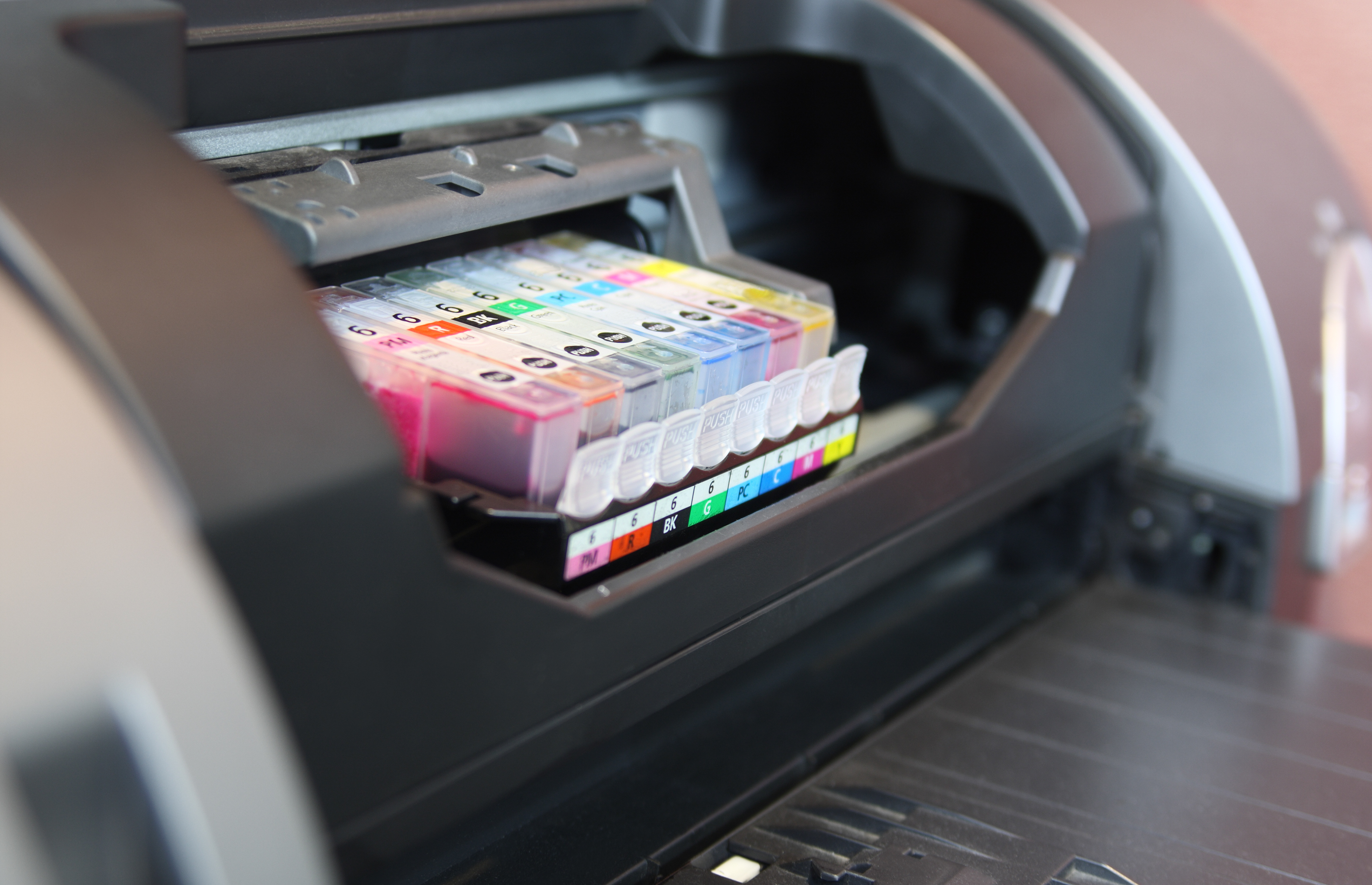How to innovate with an inkjet printer
Your home office could soon be a production facility for state-of-the-art electronics


Need a new chip for your debit card? In the near future, you could print it yourself — and you won't even need a fancy 3D printer.
Recently, scientists figured out a way to use an ordinary inkjet printer to create flexible computer chips. And soon enough, you might only need a new printer cartridge and a special piece of foil to create your own.
In a recent paper in the journal Applied Physics Letters, researchers from Germany and Canada describe how they decided to bypass 3D technology for something that seems a bit more low-tech. Though 3D printing has become more and more popular for everyone from at-home toy makers to startups trying to create prototypes of new products, it isn't always the right technology for all applications. Indeed, even for some futuristic-seeming tasks, your old inkjet printer might be best.
The Week
Escape your echo chamber. Get the facts behind the news, plus analysis from multiple perspectives.

Sign up for The Week's Free Newsletters
From our morning news briefing to a weekly Good News Newsletter, get the best of The Week delivered directly to your inbox.
From our morning news briefing to a weekly Good News Newsletter, get the best of The Week delivered directly to your inbox.
Bernhard Huber, a doctoral student who works at the Laboratory for Microsystems Technology at the Munich University of Applied Sciences, is working on a solution allowing you to print low-performance electronic circuits at home. Printing microchips used to only be available to people with complex facilities, cleanrooms, and the ability to etch and deposit materials onto tiny surfaces using the latest in lithography techniques. But Huber and his colleagues realized that for less memory-intensive devices, like the ones that live on your credit card, an inkjet works just as well. They used an inkjet printer outfitted with a cartridge filled with special electronically conductive inks to deposit the structures of a chip onto a flexible piece of foil — no expensive materials or production facility needed.
They even managed to use their humble inkjet to produce one of the newest advances in computing. It's called resistive memory, or reRAM, a new type of memory that combines long-term storage with the random-access memory computers need to process information. In the computers of the past, these memory functions were performed with two different chips — and lots of energy and speed was lost in the process.
reRAM combines both into a single, universal type of memory. In the lab, Huber and his colleagues not only printed it, but proved that their cheap version was comparable with a similar device produced in an elaborate cleanroom. They say that their discovery could help development of the technology progress even more quickly, since it could cut down on the need for expensive fabrication techniques that can slow down the pace of research.
But perhaps the most exciting application of the new printing technique will take place in the privacy of your own home. "One day, you should be able to download a circuit map and print a small circuit for your race car or a robot for your kids," says Huber, who co-authored the new paper. "You can decrease production costs dramatically."
A free daily email with the biggest news stories of the day – and the best features from TheWeek.com
Though it's not yet clear just when your printer will be able to turn into a technology printing machine that rivals the fanciest facilities, the breakthrough could one day help electronics become even cheaper and more customized. The era of personalized, printable electronics might just be upon us — as long as you don't ditch your old-school inkjet in your pursuit of the latest in whiz-bang gadgetry.
Erin Blakemore is a journalist from Boulder, Colorado. Her work has appeared in The Washington Post, Time, Smithsonian.com, mental_floss, Popular Science and more.
-
 Political cartoons for January 4
Political cartoons for January 4Cartoons Sunday's political cartoons include a resolution to learn a new language, and new names in Hades and on battleships
-
 The ultimate films of 2025 by genre
The ultimate films of 2025 by genreThe Week Recommends From comedies to thrillers, documentaries to animations, 2025 featured some unforgettable film moments
-
 Political cartoons for January 3
Political cartoons for January 3Cartoons Saturday's political cartoons include citizen journalists, self-reflective AI, and Donald Trump's transparency
